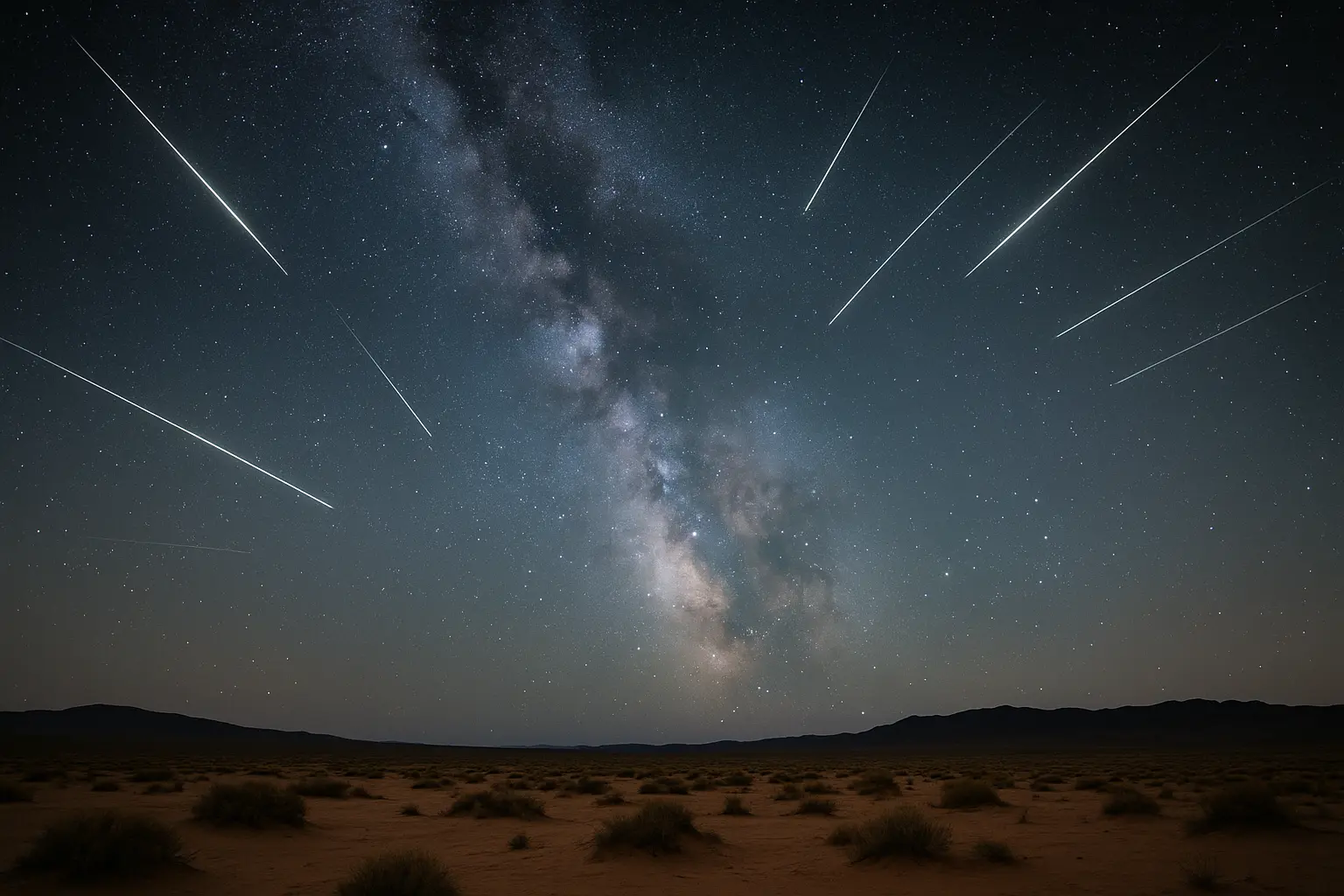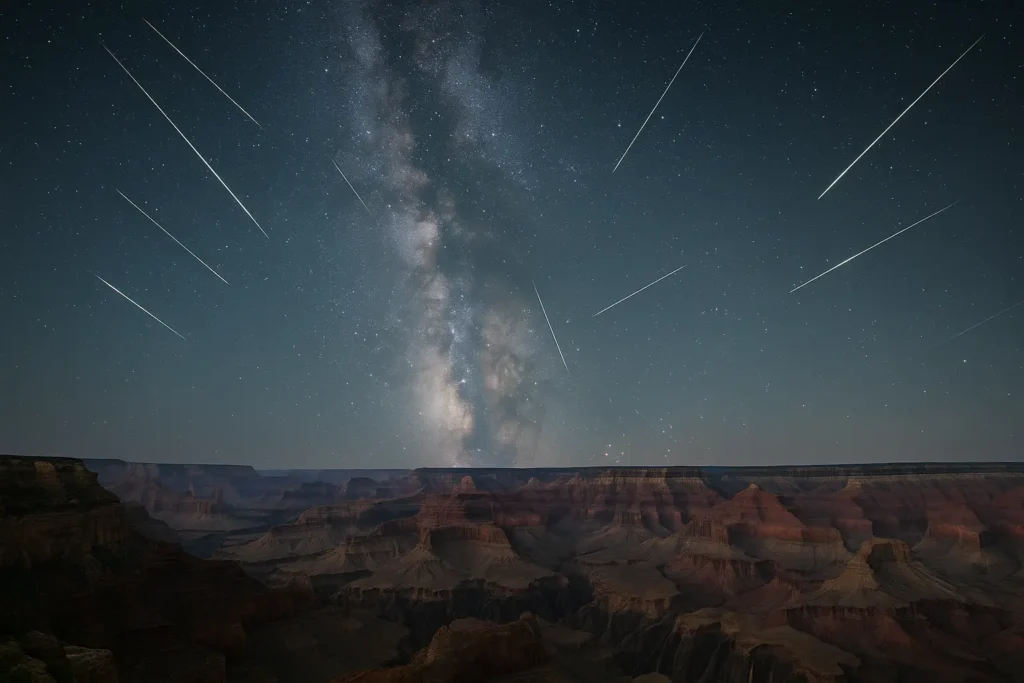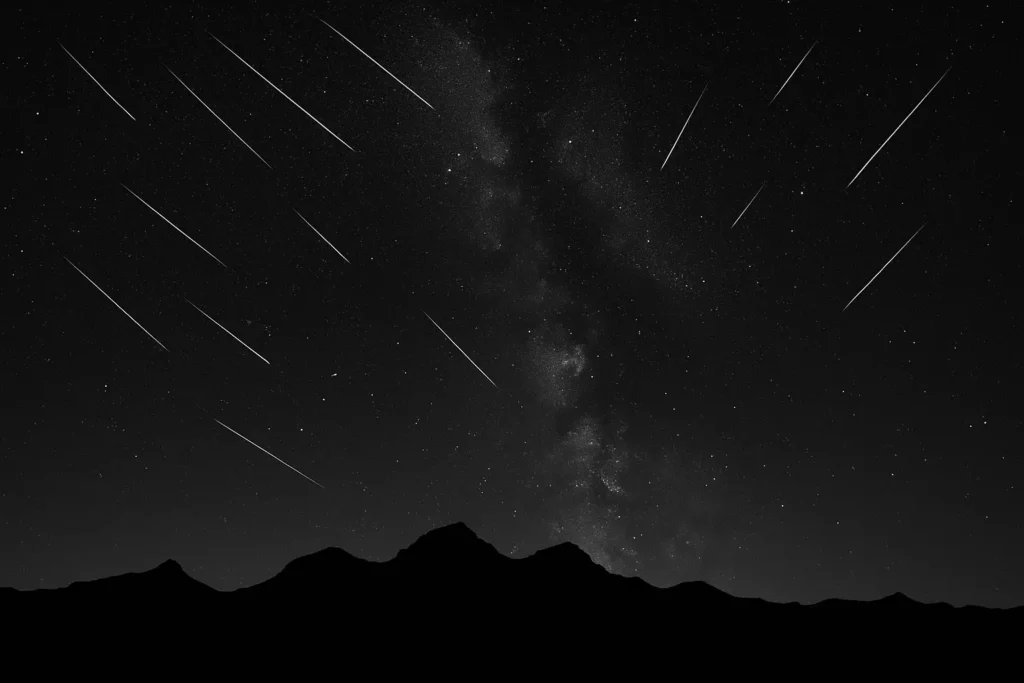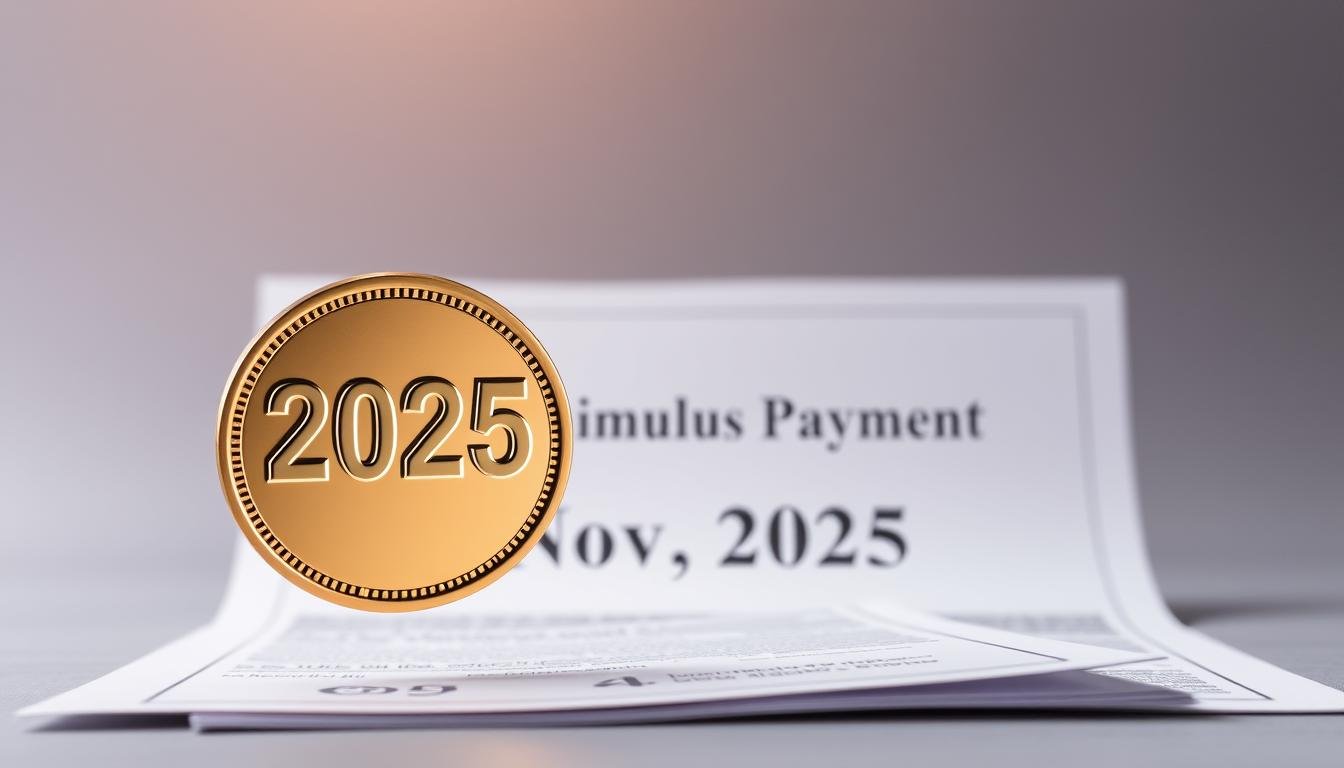
Perseid Meteor Showers Peak This Week — Best Times & Tips
Why the Perseid Meteor Showers Peak Is a Must-See Event
There are sky events you can miss without regret — and then there’s the Perseid Meteor Showers Peak, a celestial performance that makes stargazers across the globe plan their August nights with eager anticipation. If you’ve never stood under a dark sky in the quiet of midnight and watched streaks of light flash like cosmic fireworks, you’re about to experience one of nature’s greatest shows.
The Perseids aren’t just “some shooting stars.” They’re a time-honored astronomical tradition — recorded in history for nearly 2,000 years — and they’re about to reach their dazzling 2025 peak this week. Whether you’re an amateur astronomer, a photographer chasing that perfect streak across the Milky Way, or someone who just wants a magical date night under the stars, the Perseids deliver.
And here’s the good news: you don’t need a telescope, expensive gear, or special training to enjoy them — just timing, a good location, and the tips you’ll find in this guide.
Table of Contents
What Are the Perseid Meteor Showers?
The Perseids are an annual meteor shower that occurs every August when Earth passes through the debris trail of Comet Swift–Tuttle. Each tiny particle — often no bigger than a grain of sand — slams into our atmosphere at speeds of up to 37 miles per second (about 59 kilometers per second), igniting a brilliant streak of light.
The name “Perseids” comes from the fact that the meteors appear to radiate from the constellation Perseus. This doesn’t mean they actually come from Perseus — it’s just the point in the sky where their paths seem to originate when traced backward.
Quick Facts About the Perseids
| Fact | Detail |
|---|---|
| Parent Body | Comet Swift–Tuttle |
| Average Speed | ~37 miles per second |
| Peak Month | August |
| Typical Peak Rate | 60–100 meteors per hour (in ideal conditions) |
| First Recorded Observations | Around 36 AD by Chinese astronomers |
| Best Hemisphere | Northern Hemisphere |
Fun fact: The comet responsible for the Perseids, Swift–Tuttle, is about 16 miles (26 km) across — more than twice the size of the asteroid that wiped out the dinosaurs.
When Do the Perseid Meteor Showers Peak in 2025?
The 2025 Perseid Meteor Showers Peak will occur on the nights of August 11–13, with the absolute maximum expected pre-dawn hours of August 12. This is when Earth passes through the densest part of the comet’s debris stream, and meteors will appear most frequently.
Best Viewing Times by U.S. Time Zone (2025 Peak)
| Time Zone | Best Viewing Window | Expected Meteors/Hour* |
|---|---|---|
| Eastern (EST) | 11:00 PM – 5:00 AM | 80–100 |
| Central (CST) | 10:00 PM – 4:00 AM | 75–95 |
| Mountain (MST) | 9:30 PM – 3:30 AM | 70–90 |
| Pacific (PST) | 9:00 PM – 3:00 AM | 70–85 |
*Assumes minimal light pollution and clear skies.
The moon phase in 2025 will be a waning crescent, which is excellent news — minimal moonlight means darker skies, making faint meteors more visible.
Why 2025 Is One of the Best Years to Watch the Perseids
Not every year gives stargazers an equally great Perseid show. Sometimes the moon washes out fainter meteors, or weather patterns interfere. But 2025 is shaping up to be one of the best in recent memory because:
- 🌙 Moonlight Advantage: A waning crescent moon will rise late in the night, leaving most of the prime hours dark.
- 🌤 Seasonal Conditions: August nights are typically warm and comfortable in much of the U.S., making long outdoor viewing pleasant.
- 🌌 High Activity Rate: NASA estimates peak rates could hit up to 100 meteors per hour in dark-sky locations.
- 🗓 Weekend Timing: Peak nights fall close to the weekend, meaning more people can stay up without workday worries.
“The Perseids are one of the most reliable and accessible meteor showers of the year,” says Bill Cooke, lead of NASA’s Meteoroid Environment Office. “This year’s conditions are close to perfect for observing them.”
Best Places in the USA to Watch the Perseid Meteor Showers in 2025
While you can see the Perseids from almost anywhere with a clear view of the night sky, light pollution from cities and suburbs dramatically reduces how many meteors you’ll see. To truly enjoy the shower, aim for a location with Bortle Scale 1–3 skies (meaning very dark to moderately dark).
Here are top U.S. viewing locations for 2025:
🌄 Western USA
- Grand Canyon National Park (AZ) – Panoramic horizons and dry desert air make for outstanding visibility.
- Crater Lake National Park (OR) – Offers one of the darkest night skies in the Pacific Northwest.
- Joshua Tree National Park (CA) – World-class stargazing spot with low humidity.
🏞 Central USA
- Big Bend National Park (TX) – A designated International Dark Sky Park with wide-open views.
- Badlands National Park (SD) – Sparse population = minimal light pollution.
- Flint Hills (KS) – Rolling prairies with nearly unobstructed sky views.
🌲 Eastern USA
- Cherry Springs State Park (PA) – Famous for its ultra-dark skies and astronomy events.
- Shenandoah National Park (VA) – Elevated viewpoints give stunning sky panoramas.
- Acadia National Park (ME) – Coastal beauty plus August’s clear northern skies.
Pro Tip: Use the Light Pollution Map to find dark-sky areas near you. Even a 1–2 hour drive from a city can improve meteor counts dramatically.

Top Viewing Tips for an Unforgettable Perseid Experience
Catching the Perseids is simple, but a few strategic tips can turn a good night into a spectacular one:
Before You Go
- Check the Weather: Cloud cover = no meteors. Use apps like Clear Outside or AccuWeather.
- Scout Your Spot Early: Visit your viewing location in daylight to find safe footing and optimal angles.
- Dress Appropriately: Even in August, rural and desert locations can get chilly at night.
During the Show
- Arrive Early: Let your eyes adapt to the dark for at least 20–30 minutes.
- Avoid White Light: Use a red flashlight or red filter on your phone.
- Lie Back & Look Up: A reclining lawn chair is more comfortable than craning your neck.
- Face Away from Light Pollution: Even distant city glow can wash out meteors.
- Be Patient: Meteors often appear in bursts, with quiet gaps in between.
Quick Gear Checklist
- Lawn chair or blanket
- Warm layers
- Snacks & drinks
- Bug spray
- Red-light flashlight
- Camera & tripod (optional)
Photography Tips for Capturing the Perseids
Meteor photography is both challenging and rewarding. The key is to maximize your camera’s exposure to catch faint streaks without overexposing the stars.
Recommended Camera Settings
| Setting | Suggested Value |
|---|---|
| Mode | Manual |
| Shutter Speed | 15–25 seconds |
| Aperture | f/2.8 or widest available |
| ISO | 1600–3200 |
| Focus | Manual, set to infinity |
| Lens | Wide-angle (14–24mm) |
Extra Tips
- Use a sturdy tripod to avoid camera shake.
- Enable long exposure noise reduction if your camera supports it.
- Shoot continuously for at least an hour to increase your chances of catching meteors.
- Consider using an intervalometer for automated shooting.

The Science Behind the Perseids’ Bright Streaks
When a Perseid meteor enters Earth’s atmosphere, friction with air molecules superheats the meteor’s surface, causing it to vaporize and create a glowing plasma trail.
Why They’re So Bright
- High Speed: Perseids hit the atmosphere at ~37 miles/sec, generating intense heat.
- Material Composition: Rich in metals like magnesium and sodium, which produce vivid colors.
- Dense Stream: Earth crosses a thick section of Comet Swift–Tuttle’s debris in mid-August.
Meteor Colors and What They Mean
| Color | Cause |
|---|---|
| White | Magnesium, common metals |
| Yellow | Sodium |
| Green | Nickel or magnesium in high concentration |
| Blue/Purple | Calcium and other rare metals |
Perseid Meteor Showers Through History and Culture
The Perseids have inspired awe for centuries, long before telescopes and astrophotography. The earliest known records date back to 36 AD from Chinese astronomers, who documented a sudden flurry of “falling stars” in August.
Cultural Significance
- Europe (Medieval Period): Known as the “Tears of St. Lawrence,” linked to the martyrdom of the Christian saint whose feast day is August 10.
- Japan: Meteor showers were considered lucky omens, signaling good harvests or romantic blessings.
- Native American Tribes: Some saw meteors as ancestors watching over the living or as messages from the spirit world.
Quote to Inspire:
“The cosmos is within us. We are made of star-stuff.” — Carl Sagan
How to Host a Perseid Meteor Shower Viewing Party
Watching the Perseids can be a solo meditative experience, but it’s even more memorable with friends and family.
Steps to Plan Your Party
- Pick a Dark-Sky Location: Preferably away from city lights.
- Send Invites Early: Include details about dress, gear, and arrival time.
- Set Up Comfort Stations: Blankets, chairs, bug spray, and warm drinks.
- Add Themed Snacks: Meteor-shaped cookies, “Milky Way” chocolate bars, hot cocoa.
- Include Fun Extras:
- A portable speaker for soft background music
- Star maps or astronomy apps for identifying constellations
- Storytelling breaks about meteor myths
Pro Tip: If you have a telescope, even though it’s not needed for meteors, guests will love viewing planets and deep-sky objects during lulls.
Perseids vs. Other Major Meteor Showers: A Comparison
| Meteor Shower | Peak Month | Meteors/Hour (Max) | Best Viewing Hemisphere | Notes |
|---|---|---|---|---|
| Perseids | August | 60–100 | Northern | Warm weather, bright meteors |
| Geminids | December | 100–120 | Both | Cold but reliable; often brighter |
| Quadrantids | January | 60–120 | Northern | Short peak (few hours) |
| Leonids | November | 15–20 (up to 1,000 in rare storms) | Both | Famous for meteor storms |
| Eta Aquariids | May | 40–60 | Southern | From Halley’s Comet debris |
Conclusion: Why You Can’t Miss the Perseids in 2025
The 2025 Perseid Meteor Showers Peak isn’t just another date on an astronomy calendar — it’s a moment to reconnect with the cosmos. With ideal moon conditions, warm summer nights, and peak rates possibly hitting 100 meteors per hour, this year offers a front-row seat to one of the most reliable celestial shows in history.
Whether you’re watching from your backyard or a remote desert plateau, the experience is about more than counting meteors — it’s about slowing down, looking up, and feeling your place in the vast universe.
FAQs
Do I need a telescope to watch the Perseids?
No — the Perseids are best seen with the naked eye. Telescopes limit your field of view.
What’s the best time to watch?
Peak viewing is pre-dawn hours (midnight to 5 AM) on August 11–13, 2025.
Can I see them from the Southern Hemisphere?
Yes, but they’re more prominent in the Northern Hemisphere.
How long do the Perseids last?
The shower runs from mid-July to late August, with the peak in mid-August.
What causes the different meteor colors?
Colors are due to different metals vaporizing — sodium (yellow), magnesium (white), nickel (green).
Can city dwellers see the Perseids?
Yes, but you’ll see fewer meteors. Try to find a darker location away from light pollution.
How can I photograph the Perseids with a phone?
Use a tripod, night mode, and long exposure apps like ProCamera or NightCap.



Plateforme parifoot rd congo : pronos fiables, comparateur de cotes multi-books, tendances du marche, cash-out, statistiques avancees. Depots via M-Pesa/Airtel Money, support francophone, retraits securises. Pariez avec moderation.
Paris sportifs avec 1xbet congo : pre-match & live, statistiques, cash-out, builder de paris. Bonus d’inscription, programme fidelite, appli mobile. Depots via M-Pesa/Airtel Money. Informez-vous sur la reglementation. 18+, jouez avec moderation.
Наше самое ценное: https://zebraschool.com.ua
Оформите займ https://zaimy-65.ru онлайн без визита в офис — быстро, безопасно и официально. Деньги на карту за несколько минут, круглосуточная обработка заявок, честные условия и поддержка клиентов 24/7.
Срочные онлайн-займы https://zaimy-80.ru до зарплаты и на любые цели. Минимум документов, мгновенное решение, перевод на карту 24/7. Работаем по всей России, только проверенные кредиторы и прозрачные ставки.
Перейти до деталей: https://press-express.com.ua/kulinariia.html
Сопровождение ВЭД деятельности помогает нам работать уверенно и спокойно https://vsoprovozhdenie1.ru/
Теперь импорт проходит спокойно и без ошибок в документах: Сопровождение ВЭД
Официальный сайт Kraken kra44 at безопасная платформа для анонимных операций в darknet. Полный доступ к рынку через актуальные зеркала и onion ссылки.
Нотариальный перевод быстро – ближайший перевод документов рядом. Нотариальный перевод документов в Самаре. Срочно, качественно, недорого. Любые языки. Конфиденциальность гарантируем.
View details: https://mamamia.by/forum/viewtopic.php?p=36327#36327
brandelevate.click – Navigation felt smooth, found everything quickly without any confusing steps.
Okay, so I stumbled upon ggbetreview and gotta say, it’s pretty decent for getting the lowdown. Layout is tidy, easy to navigate, and they seem to know their stuff. Definitely worth a look before you dive headfirst into any bets. Check it out here: ggbetreview